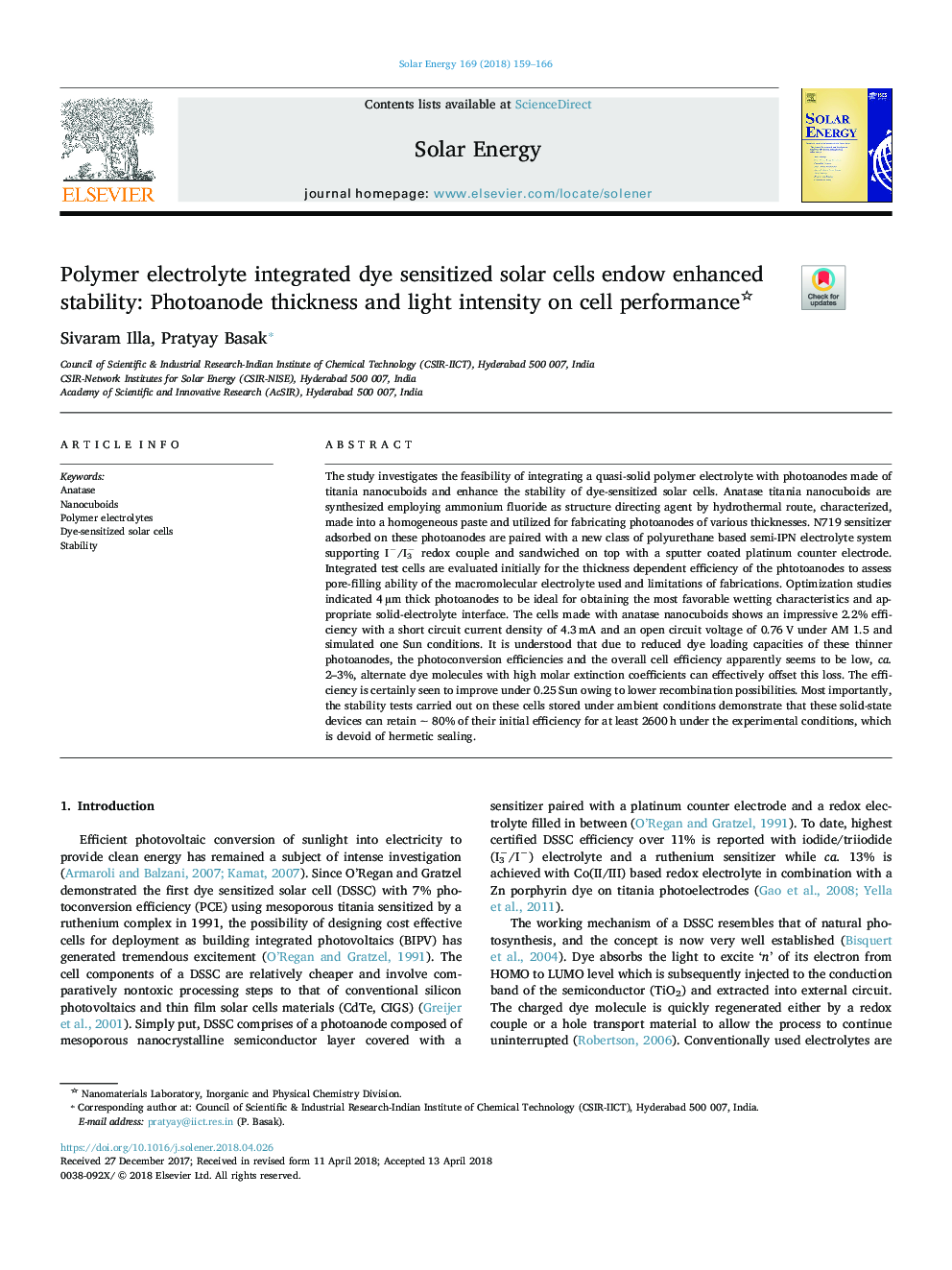| کد مقاله | کد نشریه | سال انتشار | مقاله انگلیسی | نسخه تمام متن |
|---|---|---|---|---|
| 7935166 | 1513049 | 2018 | 8 صفحه PDF | دانلود رایگان |
عنوان انگلیسی مقاله ISI
Polymer electrolyte integrated dye sensitized solar cells endow enhanced stability: Photoanode thickness and light intensity on cell performance
دانلود مقاله + سفارش ترجمه
دانلود مقاله ISI انگلیسی
رایگان برای ایرانیان
کلمات کلیدی
موضوعات مرتبط
مهندسی و علوم پایه
مهندسی انرژی
انرژی های تجدید پذیر، توسعه پایدار و محیط زیست
پیش نمایش صفحه اول مقاله

چکیده انگلیسی
The study investigates the feasibility of integrating a quasi-solid polymer electrolyte with photoanodes made of titania nanocuboids and enhance the stability of dye-sensitized solar cells. Anatase titania nanocuboids are synthesized employing ammonium fluoride as structure directing agent by hydrothermal route, characterized, made into a homogeneous paste and utilized for fabricating photoanodes of various thicknesses. N719 sensitizer adsorbed on these photoanodes are paired with a new class of polyurethane based semi-IPN electrolyte system supporting Iâ/Iâ3 redox couple and sandwiched on top with a sputter coated platinum counter electrode. Integrated test cells are evaluated initially for the thickness dependent efficiency of the phtotoanodes to assess pore-filling ability of the macromolecular electrolyte used and limitations of fabrications. Optimization studies indicated 4â¯Âµm thick photoanodes to be ideal for obtaining the most favorable wetting characteristics and appropriate solid-electrolyte interface. The cells made with anatase nanocuboids shows an impressive 2.2% efficiency with a short circuit current density of 4.3â¯mA and an open circuit voltage of 0.76â¯V under AM 1.5 and simulated one Sun conditions. It is understood that due to reduced dye loading capacities of these thinner photoanodes, the photoconversion efficiencies and the overall cell efficiency apparently seems to be low, ca. 2-3%, alternate dye molecules with high molar extinction coefficients can effectively offset this loss. The efficiency is certainly seen to improve under 0.25 Sun owing to lower recombination possibilities. Most importantly, the stability tests carried out on these cells stored under ambient conditions demonstrate that these solid-state devices can retainâ¯â¼â¯80% of their initial efficiency for at least 2600â¯h under the experimental conditions, which is devoid of hermetic sealing.
ناشر
Database: Elsevier - ScienceDirect (ساینس دایرکت)
Journal: Solar Energy - Volume 169, 15 July 2018, Pages 159-166
Journal: Solar Energy - Volume 169, 15 July 2018, Pages 159-166
نویسندگان
Sivaram Illa, Pratyay Basak,